In Historic Rescue Mission, Kerala IAS Officer Evacuated 2 Lakh People in Just 3 Days!
Facing a nearly impossible task, Krishna Teja and Dr Isaac had to deploy forces that could reach every locality and every house in the region and convince people to evacuate.

On the night of 16 August 2018, Dr Thomas Isaac, the finance minister of Kerala, was in a meeting with Krishna Teja Mylavarapu, the sub-collector of Alleppey (Alappuzha). Deep in a discussion about administrative issues, both of them received an unnerving message.
Dams near Chengannur and Kuttanad in Alappuzha were filling up due to heavy rains and were going to be opened immediately.
The IAS officer and the minister had the same thought—if the barrier of the dam would be opened right then, the low-lying areas in Kuttanad were in direct danger of submerging and would result in the loss of thousands of lives.
Without a moment’s hesitation, they began developing “Operation Kuttanad,” a mammoth mission to rescue over 2 lakh people from the regions within two days, rehabilitating them to relief camps.
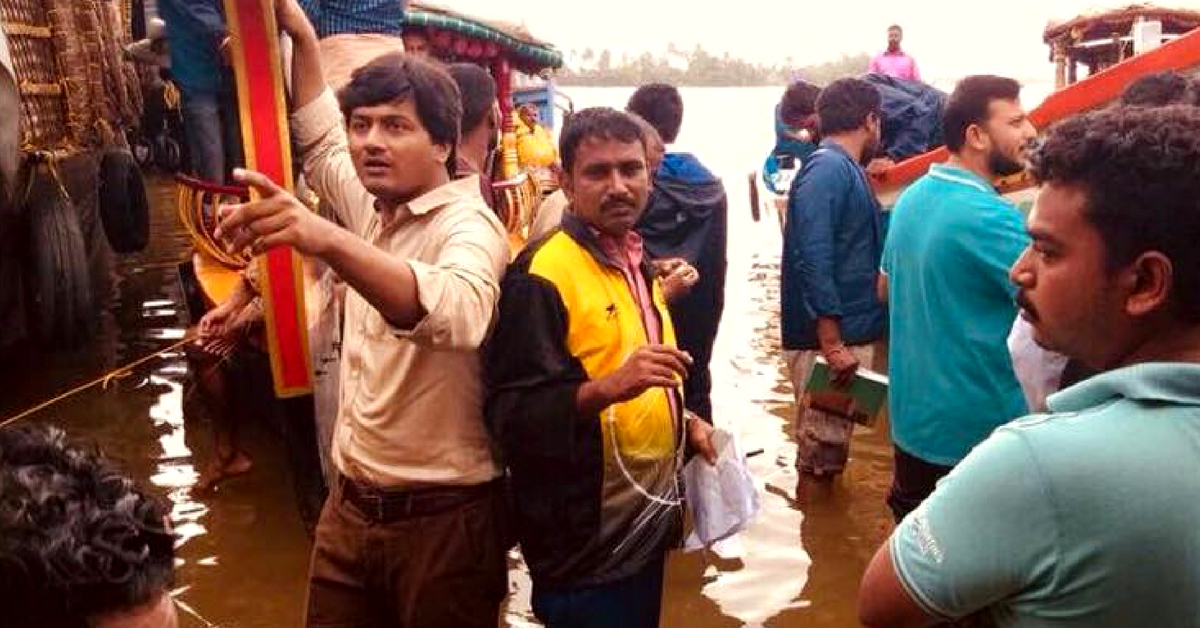
Speaking to The Better India, Krishna Teja said, “Around 10:00 p.m. we received information that the water levels in the district have been abruptly rising because of the opening of the dams, and within 24-48 hours of this, the water would reach Kuttanadu. We immediately called a meeting of all district level officers who were available. When we conducted the meeting, most district officers were sceptical of whether we could evacuate 2 lakh people.
GiveIndia and The Better India have come together to help Rebuild Kerala by supporting 41,000 affected families. You too can be a part of this movement and help us raise funds for the NGOs working to rehabilitate these families. If all of us come together with a small monthly contribution, we can make a real and meaningful difference in helping restore normalcy to those who need our help the most.
Unable to view the above button? Click here
This evacuation may have been easier if we had road access, but in Kuttanadu, we could only use boats to evacuate them. Dr Isaac and I refused to change our stand as we did not want to risk the lives of 2 lakh people.”
Facing a nearly impossible task, Krishna Teja and Dr Isaac had to deploy forces that could reach every locality and every house in the region and convince people to evacuate. Everyone—right from fisherfolk to trained army men— took to the flooding streets, well equipped and ready to fight an upstream battle.
By 11:00 p.m., they had assembled the meeting and were discussing plans to evacuate the large population before the risk went any higher. At 3:00 a.m., their plan was ready and at 5:30 a.m. on 17th August, Operation Kuttanadu had commenced.
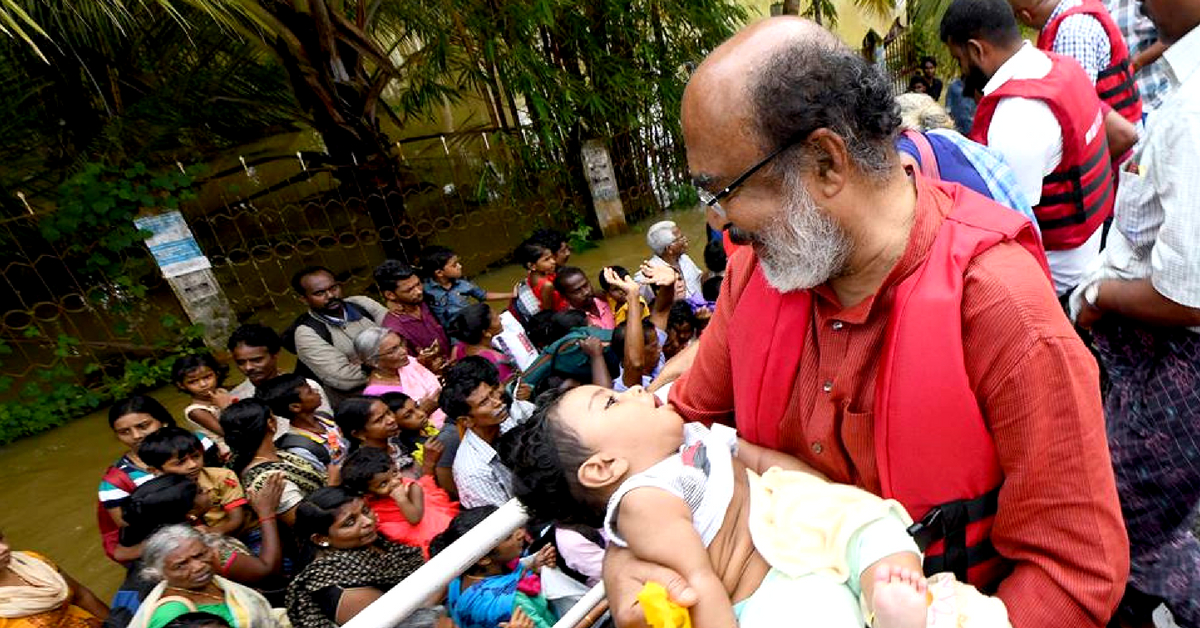
Krishna Teja revealed, “From the beginning, the Finance Minister and I were clear that we would not inform anyone about the mission, especially the media. I know the media supports us a lot, but if there was any sort of panic, the people would start crowding which would lead to a stampede and result in a massive disaster. So we kept Operation Kuttanad a secret.”
Further elaborating on the mission, Krishna Teja said, “The Finance Minister was on one side and me on the other. I was collecting boats while he was convincing people to come to Alleppey. For this, we used many houseboats, motorboats, fishermen boats and many speed boats and boats with a big platform that are usually used to transport lorries. Many NDRF teams and BSF teams also supported us.”
According to a report by the Times of India, 220 people divided into seven teams of the National Disaster Response Force (NDRF), 10 teams from the Indian Navy and two teams from the army were deployed in Chengannur. Fire and rescue teams took 23 boats into the water while the fishermen, now hailed as the superheroes during Kerala floods were instrumental in rescuing over 16,000 people!
District collector S Suhas said, “More than 200 boats [were] deployed for rescue in Kuttanad. The government had directed the police to seize houseboats after some of the houseboat owners refused to send their boats for rescue activities…”
Within three days, the rescue forces had evacuated 2.5 lakh people from Kuttanad—about 95% of the total population of the region!
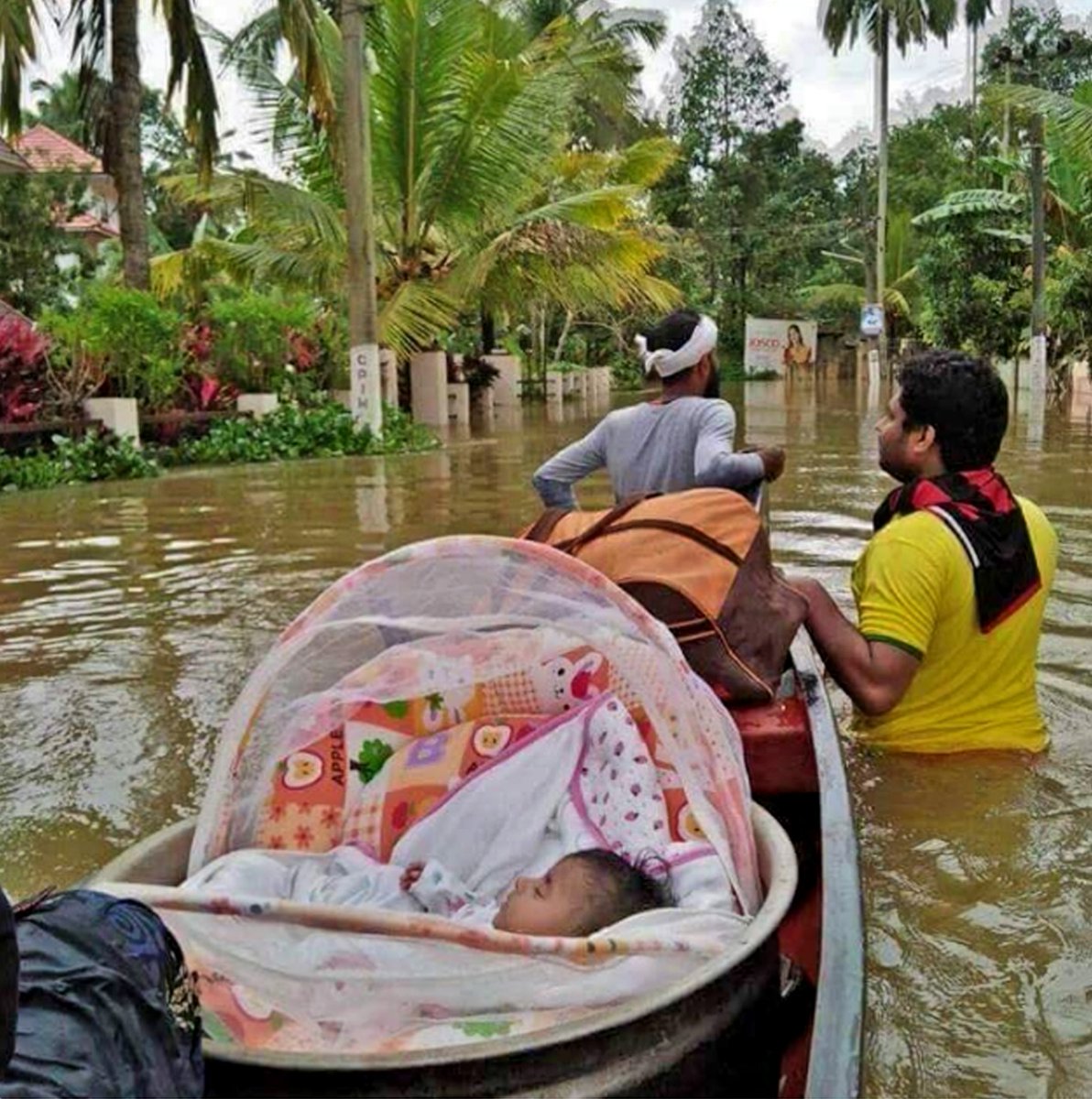
Speaking about the operation in Chengannur, an official said, “The taluk has a population of 1.28 lakh; the rescue workers evacuated more than 1 lakh people.”
Surprisingly, the biggest challenge for the rescue teams wasn’t managing rescue teams but the residents of Kuttanad and Chengannur. Speaking to Firstpost, Dr Isaac said that a huge problem that the district administration faced was a lot of people refused to move to relief camps because they believed that the floods would not affect them. They only changed their mind once the water started reaching their doorsteps.
“As Dr Isaac said, many people were reluctant to come. So I sent one policeman on every boat I deployed, along with a revenue official. The revenue official tried to convince the people, and if it didn’t work, the police officer forced them. Of course, they didn’t use physical force, but their presence brought about some fear because people tend to obey the police uniform quickly,” says Krishna Teja.
At that moment, the priority of the IAS officer was to rescue as many people as possible, within a very short period. There was no time to waste.
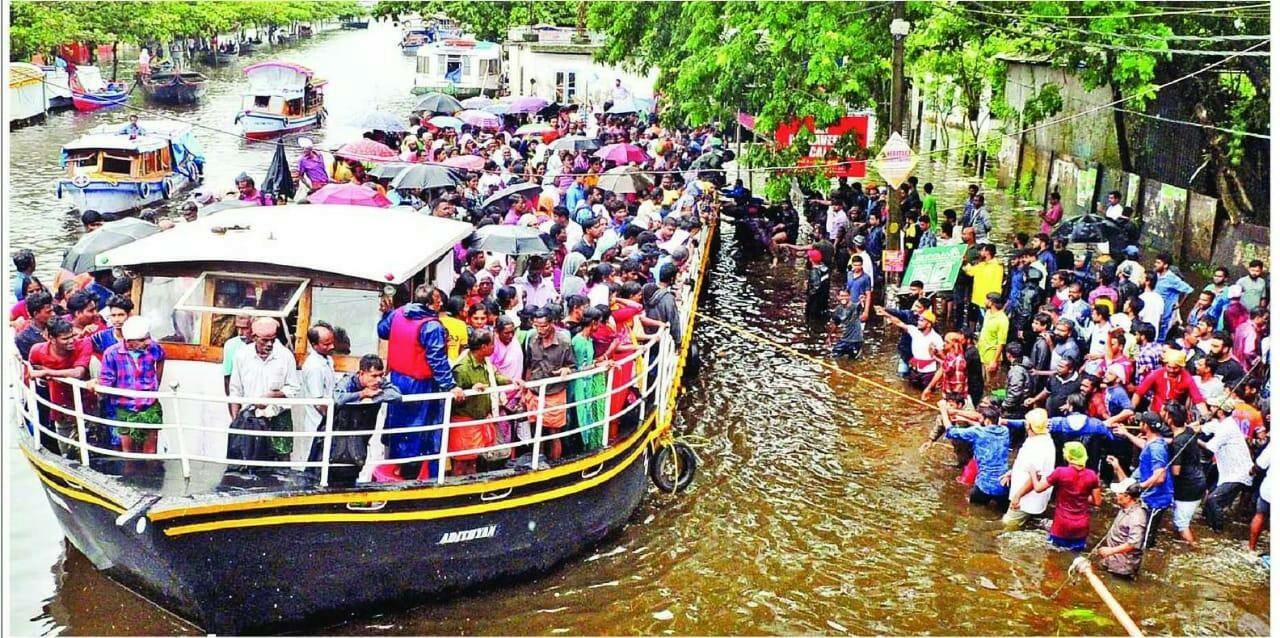
Once the magnitude of the situation was apparent, people were quick to respond positively to the evacuation efforts. By then, the water levels had risen so much that boats and airlifting were the only options left with the district administration.
“Until 18 August, we were receiving many distress calls from people about their loved ones being stranded.
You may also like: What Was It like to Work in Flood-Hit Kerala? IAS Officer Shares First-Hand Account!
By 18th, these calls had reduced substantially, and by 5 o’clock that day, the calls became zero. However, we continued the operation for three more hours.” the IAS officer says.
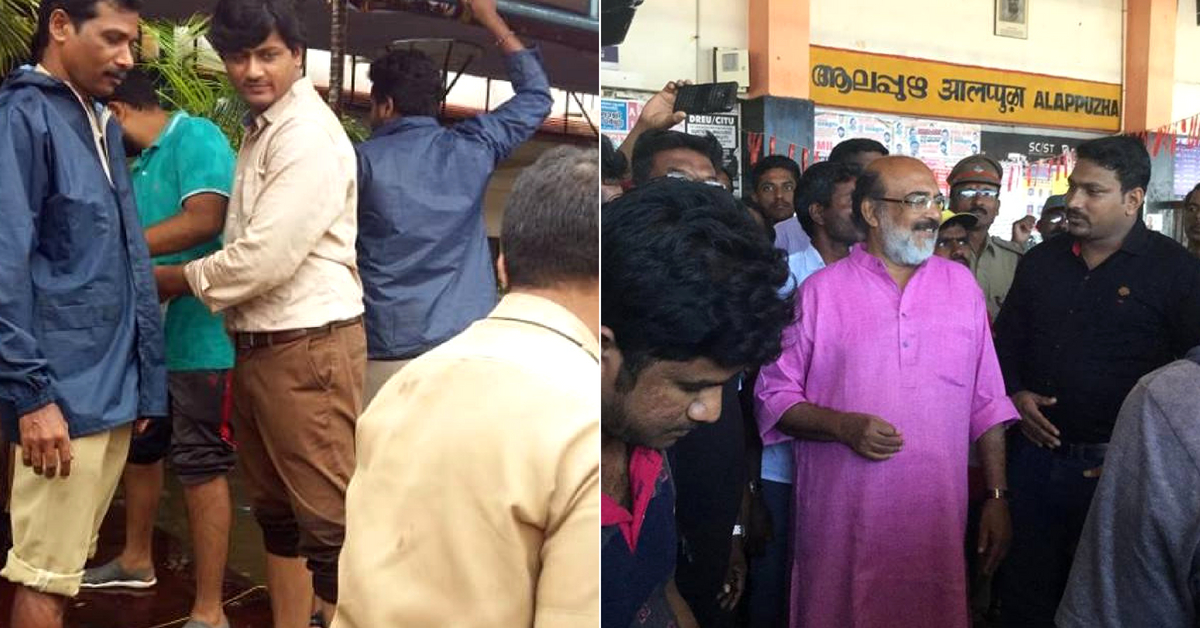
On 19 August, G Sudhakaran, the Public Works Department minister gave a statement saying, “95% people were evacuated from Pandanad. Over 15 relief camps are functioning in Chengannur. At least one lakh people moved to relief camps and other safer places in Chengannur…”
But mere evacuation wasn’t where the IAS officer or the Minister could stop their rescue.
Over the days, they went on the ground, working with trained rescue operators and channelling relief supplies to the camps.

Wading through ankle deep waters, the administrative heads were working shoulder to shoulder with other operatives.
Thousands were people were approaching them, anxious about their life in the next few days and perhaps even panicking but Krishna Teja and Dr Isaac were right there to support their people through the ordeal.
GiveIndia and The Better India have come together to help Rebuild Kerala by supporting 41,000 affected families. You too can be a part of this movement and help us raise funds for the NGOs working to rehabilitate these families. If all of us come together with a small monthly contribution, we can make a real and meaningful difference in helping restore normalcy to those who need our help the most.
Unable to view the above button? Click here
There is no denying that the next few days were just as challenging for the authorities. But it is the dedication of such people that helped Kerala survive through the worst of the floods they witnessed in 100 years.
We discover new stories of bravery, compassion and humanity every single day. Although the floods have been devastating for Kerala, people are standing strong independently as well as helping others stand strong with them. Each story of heroism deserves a special mention, and we will strive to do so till Kerala is rebuilt!
(Edited by Gayatri Mishra)
Like this story? Or have something to share?
Write to us: [email protected]
Connect with us on Facebook and Twitter.
If you found our stories insightful, informative, or even just enjoyable, we invite you to consider making a voluntary payment to support the work we do at The Better India. Your contribution helps us continue producing quality content that educates, inspires, and drives positive change.
Choose one of the payment options below for your contribution-
By paying for the stories you value, you directly contribute to sustaining our efforts focused on making a difference in the world. Together, let’s ensure that impactful stories continue to be told and shared, enriching lives and communities alike.
Thank you for your support. Here are some frequently asked questions you might find helpful to know why you are contributing?


This story made me
-
97
-
121
-
89
-
167











